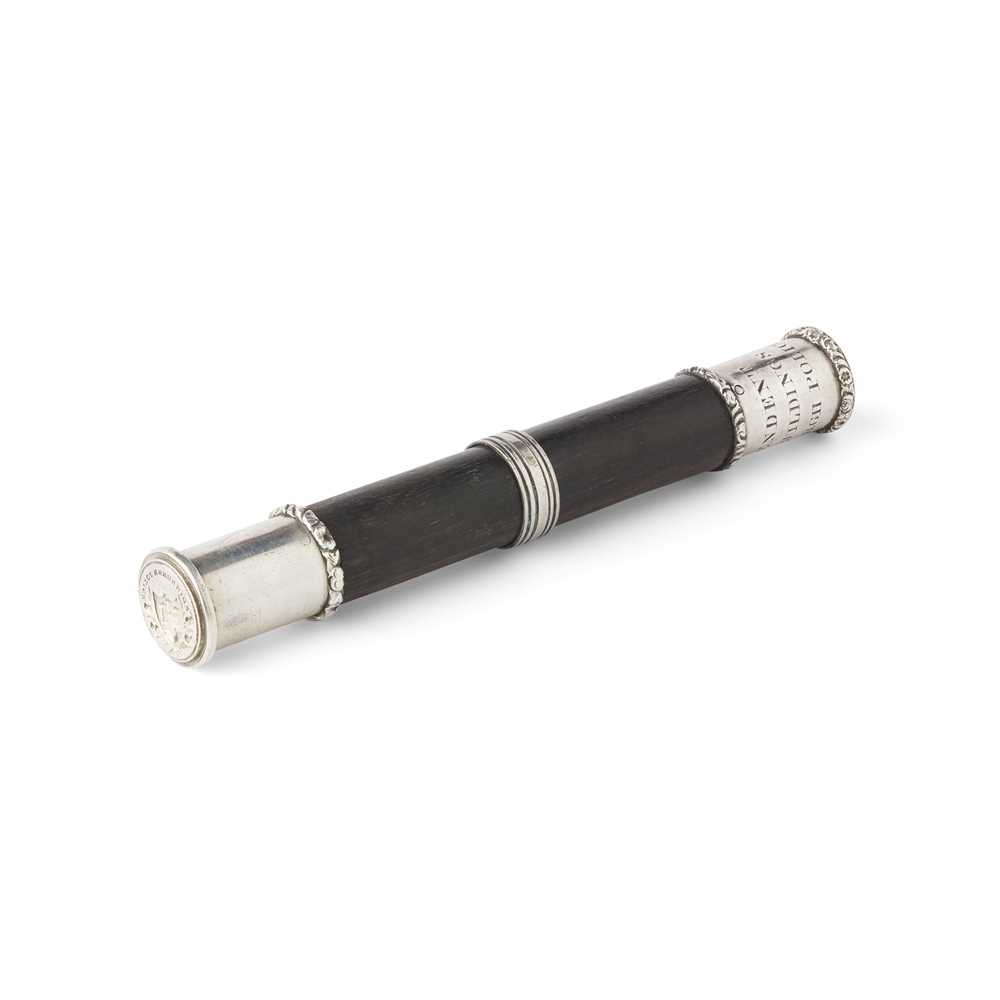AN EARLY VICTORIAN EDINBURGH POLICE COMBINATION SILVER MOUNTED TIPSTAFF AND SEAL, CIRCA 1840
£630
Auction: 19 May 2023 from 10:00 BST
Description
the simple ebony cylindrical shaft with reeded mount to centre, with socket mounted pommel caps the upper with VR cypher with Royal crown above, the upper flat engraved with a seal of the city arms flanked by thistles and Edinburgh Police above, the lower mount engraved SUPERINTENDENT OF STREETS & BUILDINGS OF EDINBURGH POLICE
Dimensions
Length: 12.7cm, matrix 20mm diameter
Provenance
Provenance:
Matrix: A Collection of British Seals - David Morris 2012- Seal 27, Pg 71
Footnote
Note:
Tipstaves were carried by police officers from the late eighteenth century onwards as a badge of office, the forerunner of the modern warrant card. Originally the shaft was hollow to contain the document of authority.
The Edinburgh Police Act of 1805 replaced the old constabulary police system throughout the city, some 24 years before Sir Robert Peel founded the Metropolitan Police in London and brought in with it a uniform. The Edinburgh Police Force was administered until 1865 by a Police commission, and not by the town council. The rank of Lieutenant, used from 1812 in Scotland, came above inspector and below assistant superintendent, being roughly equivalent to an English chief inspector.
It would appear that specific historic areas have used Tipstaffs for centuries to denote positions of authority but they do not typically combine a seal matrix.
While having the appropriate armorial or royal cipher is common to the end mount caps these two examples are among a very small number, if not the only, examples recorded with a seal matrix.

